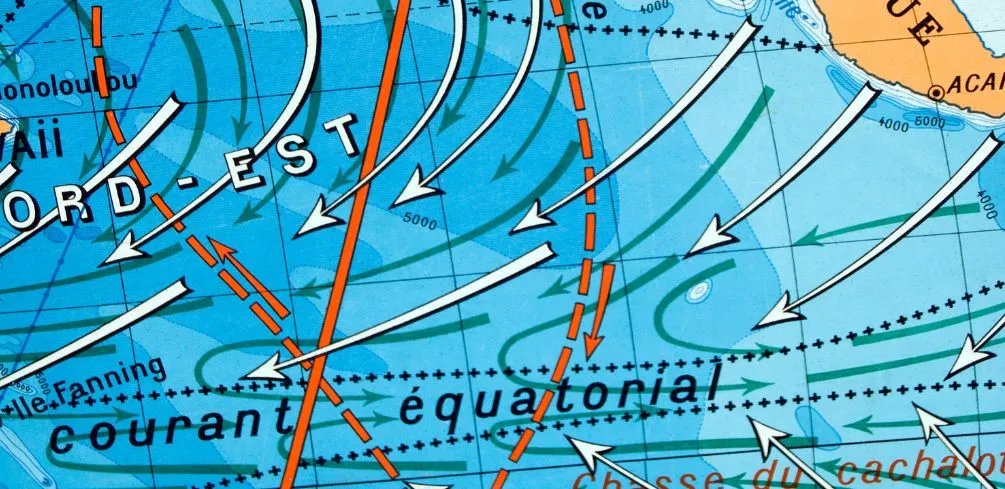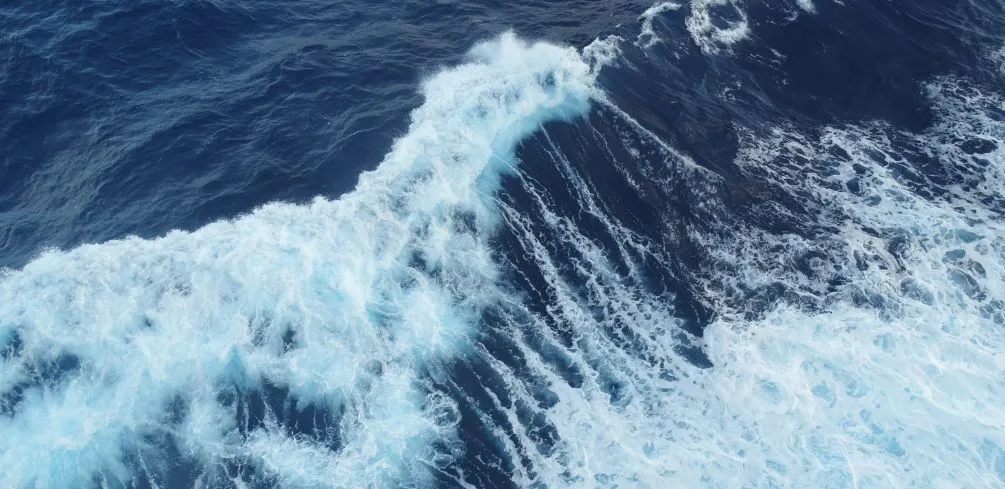Imagine standing on the shore, staring at the vast expanse of the ocean as waves crash against the sand. The energy generated by these waves is immense, and what if you could harness it to power your home or even entire cities?
Welcome to the world of kinetic wave energy – a renewable resource with incredible potential for transforming how we generate electricity. As you dive into this article, you’ll explore the science behind kinetic wave energy and discover various methods currently being developed to harness its power.
You’ll also delve into its environmental impacts and benefits, as well as some challenges faced in implementing this technology. Let’s embark on an exciting journey towards understanding how harnessing ocean power could shape our future in renewable energy and contribute to a more sustainable planet.
The Science Behind Kinetic Wave Energy
In today’s world, it’s essential to understand the science behind kinetic wave energy, as it holds great potential for sustainable power generation. Wave mechanics and tidal forces play a crucial role in harnessing this renewable energy source.
To comprehend the concept of kinetic wave energy, you must first grasp the fundamental principles of wave mechanics – that is, the study of how waves propagate through various media such as water or air. One key aspect of wave mechanics involves understanding how tidal forces create waves in bodies of water.
Tides are primarily caused by the gravitational interactions between Earth, Moon, and Sun. These forces generate alternating patterns of high and low tides that can be converted into usable energy through specialized devices like tidal turbines or wave energy converters.
The efficiency with which these systems capture and convert kinetic wave energy depends on several factors, including wave height, speed, wavelength, and local topography.
Harnessing kinetic wave energy offers significant advantages over other forms of renewable power generation like solar or wind due to its predictability and constant availability. Although still in its infancy compared to more established technologies, ongoing advancements in materials science and engineering promise increased efficiencies at lower costs.
As our understanding of both wave mechanics and tidal forces deepens through continued research efforts, we can expect to see an even greater role for this promising form of sustainable power generation in meeting global energy demands while reducing our reliance on fossil fuels.
Methods of Harnessing Ocean Power
You’ll find that harnessing ocean power can be achieved through various methods such as tidal, wave, and ocean thermal energy conversion.
Tidal energy utilizes the natural ebb and flow of coastal tides to generate electricity by spinning underwater turbines. These ocean turbines are positioned in areas with high tidal movements, which then turn the turbine blades as water flows past them.
Similarly, tidal lagoons work by capturing the tide’s kinetic energy in a man-made reservoir, allowing it to be released at controlled intervals through turbines.
Wave energy technology captures the motion of waves to generate electricity. Devices such as point absorbers or oscillating water columns convert wave movement into mechanical or pneumatic power that drives generators to produce electrical energy.
The efficiency of these systems depends on factors like location and wave characteristics; however, advancements in technology continue to improve their potential output.
Ocean thermal energy conversion (OTEC) is yet another method that exploits temperature differences between warm surface waters and cold deep waters to produce electricity using a heat exchanger system.
Harnessing ocean power presents an incredible opportunity for clean and renewable energy generation. With continuous research and technological advancements being made in this field, it’s essential that we explore every avenue available for sustainable development while considering any environmental impacts associated with each approach.
As we strive towards a greener future, tapping into the vast potential of our oceans will play an integral part in diversifying our global energy mix and reducing dependence on fossil fuels.
Environmental Impacts and Benefits
Harnessing ocean power has its share of environmental perks and potential pitfalls, providing a promising path to plentiful, planet-friendly power. Ocean conservation and climate adaptation are at the forefront of this innovative journey.
As we explore the benefits and challenges associated with kinetic wave energy, we find ourselves delving into an area that could significantly impact our global energy landscape.
| Benefits | Challenges |
|---|---|
| Reduces greenhouse gas emissions | Potential impacts on marine life |
| Renewable source of energy | High installation costs |
| Supports climate adaptation efforts | Uncertain long-term effects on ecosystems |
| Can help protect coastal communities from storm surges | Requires extensive research and development |
| Contributes to ocean conservation by reducing reliance on fossil fuels | Limited geographical scope for deployment |
As you can see in the table above, there are numerous advantages to harnessing ocean power. It serves as a renewable source of energy, which helps reduce greenhouse gas emissions that contribute to climate change.
Furthermore, it supports climate adaptation efforts as it can potentially protect coastal communities from storm surges and other consequences resulting from rising sea levels. In addition, tapping into kinetic wave energy contributes to ocean conservation by lessening our reliance on environmentally damaging fossil fuels.
On the flip side, challenges must be addressed when considering large-scale implementation of kinetic wave technology. Some concerns revolve around potential impacts on marine life and ecosystems due to installations or possible long-term effects caused by tapping into this new resource.
Additionally, high installation costs may limit initial investments in research and development necessary for widespread adoption. Lastly, not all coastal regions have sufficient wave resources required for optimal deployment of these technologies.
Despite these challenges, continued exploration into harnessing ocean power remains vital in our quest for sustainable solutions that prioritize both the environment and humanity’s need for clean energy sources.
Challenges in Implementing Kinetic Wave Technology
Imagine the possibilities of a future powered by clean, renewable ocean energy – but be aware that it won’t come without overcoming some significant challenges first. Harnessing the power of kinetic waves has the potential to revolutionize our energy landscape, but wave scalability and implementation costs pose substantial hurdles for this burgeoning technology.
As you dive deeper into understanding these challenges, you’ll uncover opportunities for innovation and growth within the realm of kinetic wave energy.
One major challenge in implementing kinetic wave technology is achieving a scalable solution that can meet growing global energy demands. While small-scale systems have proven effective in localized settings, large-scale deployment remains elusive due to factors such as varying ocean conditions, complex engineering requirements, and difficulties in system integration.
Additionally, current wave energy technologies are still under development and have yet to reach full maturity, which limits their capacity to generate power on a massive scale. Consequently, significant investments in research and development are needed for continued technological advancements that will ultimately enhance scalability.
Another pressing issue facing kinetic wave technology is the high implementation costs associated with its deployment. Building infrastructure capable of harnessing oceanic power requires substantial capital investment upfront due to factors like specialized materials resistant to corrosive marine environments and intricate designs tailored to specific coastal regions.
Furthermore, ongoing operational expenses related to maintenance and repair can quickly add up over time as components degrade or become damaged from harsh sea conditions. Therefore, reducing implementation costs through innovations in materials science or streamlined design processes must be prioritized if kinetic wave technology is ever going to become a viable source of clean renewable energy on a global scale.
The Future of Renewable Energy and Wave Power
As you ride the tide of change toward a cleaner, greener future, it’s essential to examine the untapped potential of renewable energy sources like ocean power and consider how they could shape our world in the years to come.
Wave energy economics play a significant role in determining its viability as an alternative power source. To harness this abundant resource effectively, we must analyze factors such as efficiency, cost-effectiveness, environmental impact, and technological advancements.
Global policies on renewable energy have begun recognizing wave power as a game-changer for achieving sustainability goals. Numerous countries have implemented incentives and support schemes to encourage investment in the research and development of kinetic wave technologies.
For instance, the European Union has committed substantial funding through its Horizon 2020 program to advance wave energy projects.
With continued backing from governments around the world – including tax credits for investments in clean technology – there is potential for rapid growth in this sector.
The future landscape of renewable energy will likely be shaped by breakthroughs in wave power technology that enable more efficient conversion processes and reduced costs per unit of electricity generated. As innovations emerge from ongoing research efforts alongside advancements in other renewables like solar and wind power, wave energy could potentially become a crucial component of our global energy mix.
By embracing both established forms of clean energy generation and those on the cutting edge, like kinetic wave technology, we can pave the way towards a truly sustainable future powered by diverse sources that protect our environment while meeting the growing demand for electricity.
Conclusion
You’ve just dipped your toes into the vast ocean of knowledge about kinetic wave energy. It’s clear that harnessing this renewable power source has its fair share of challenges, but the potential environmental benefits are too great to ignore.
As you ride the wave of renewable energy advancements, remember that every drop in the bucket counts. With continued research and dedication, kinetic wave technology could be a key player in our sustainable future.





